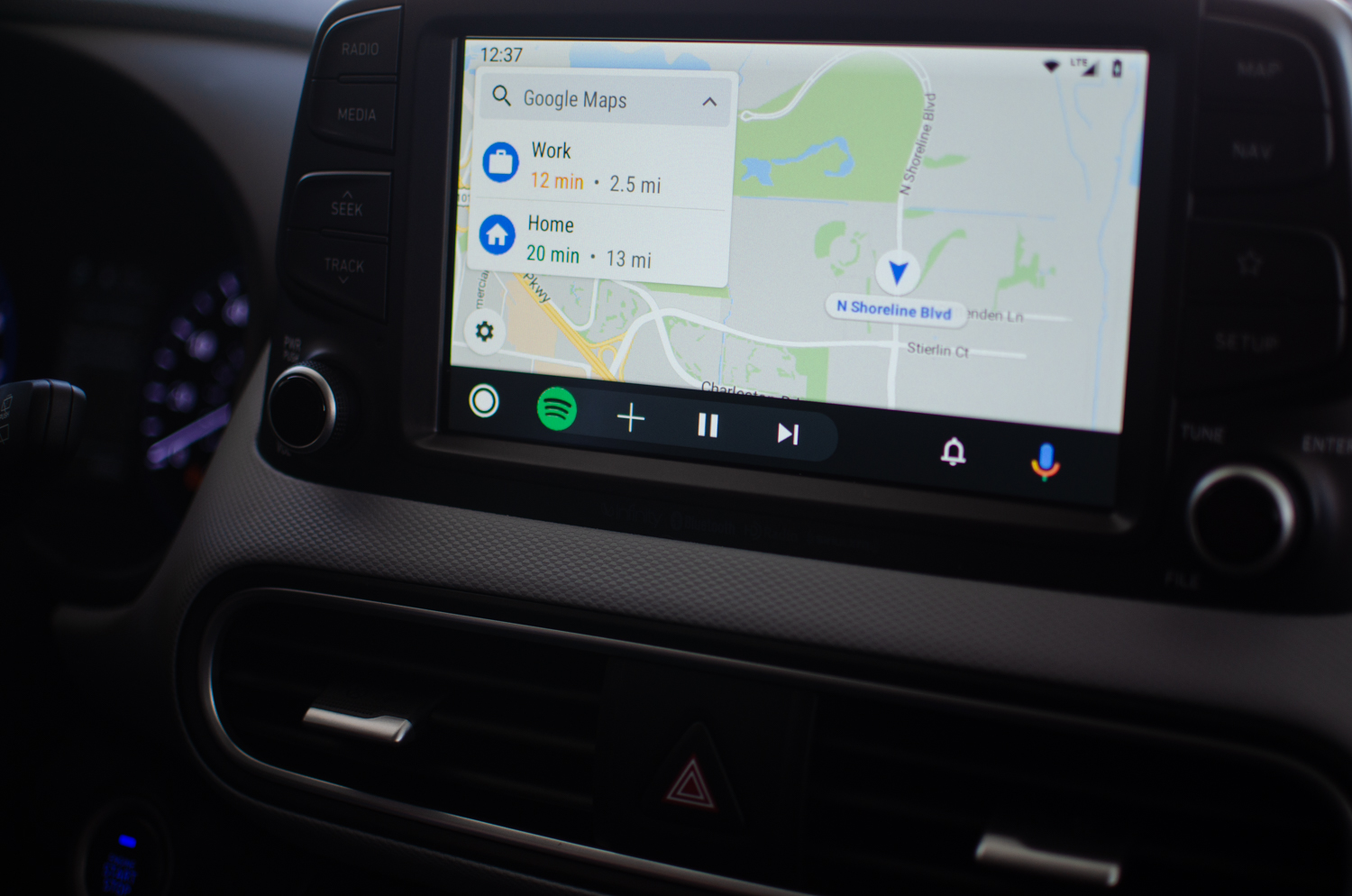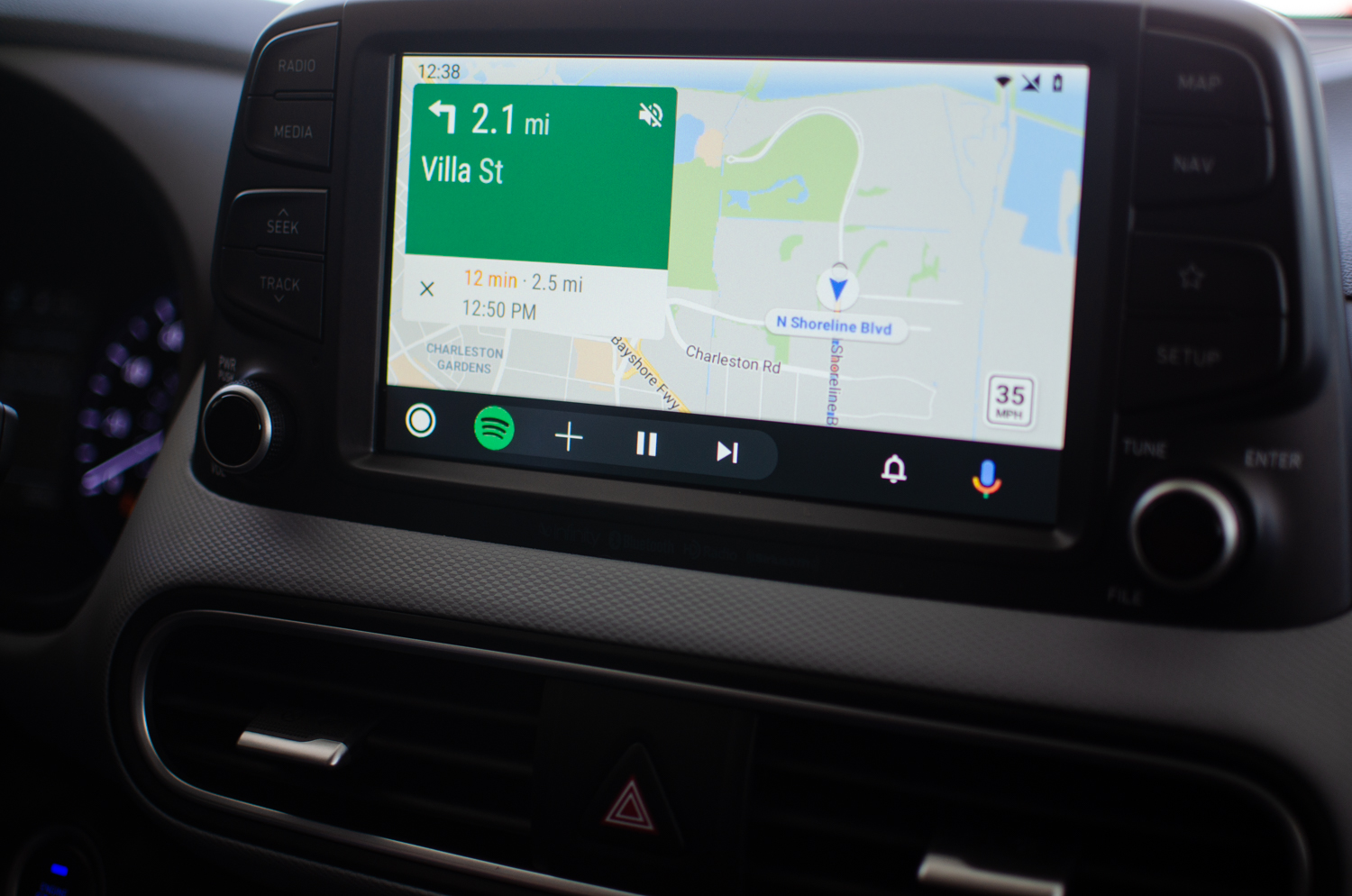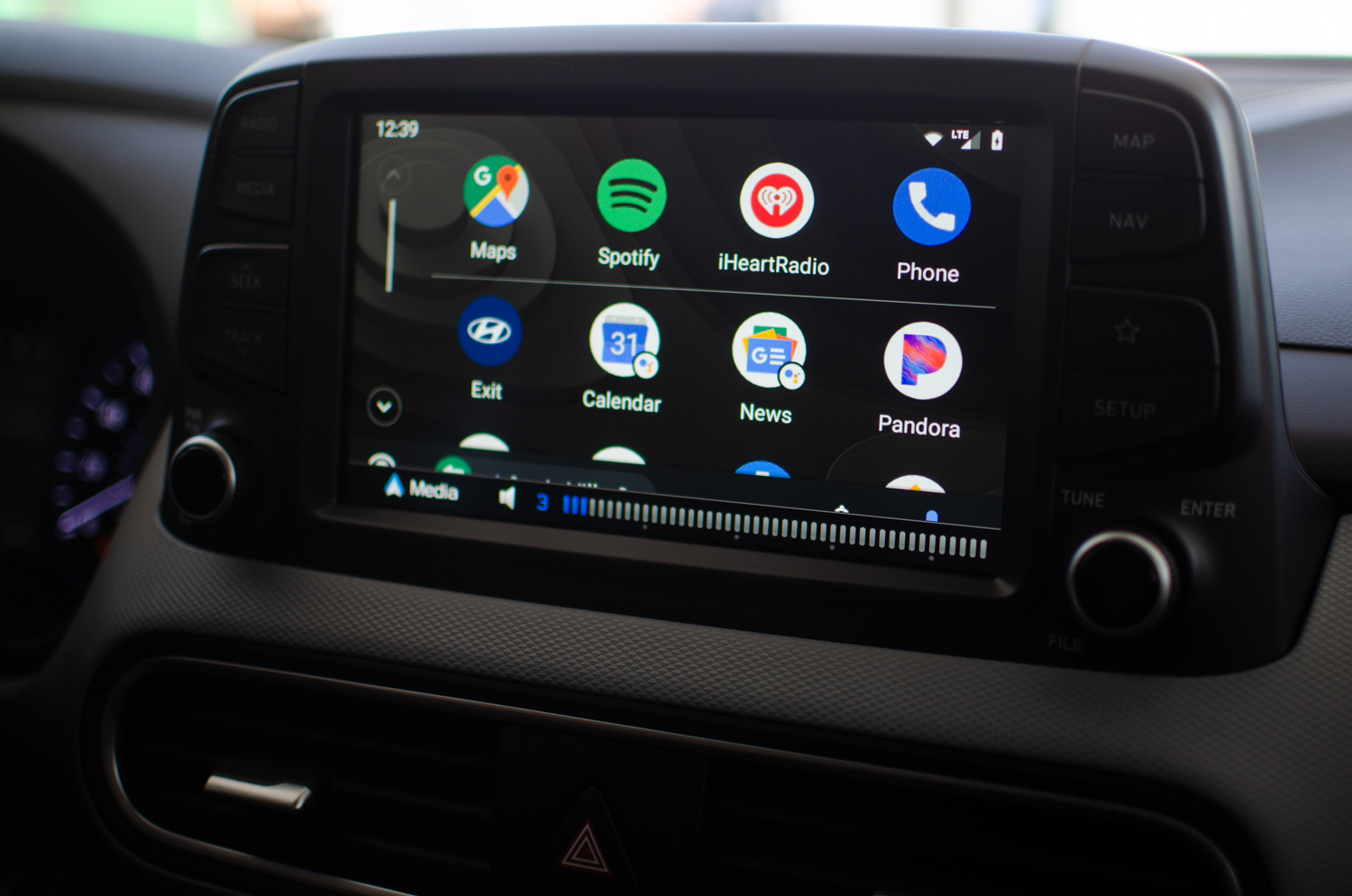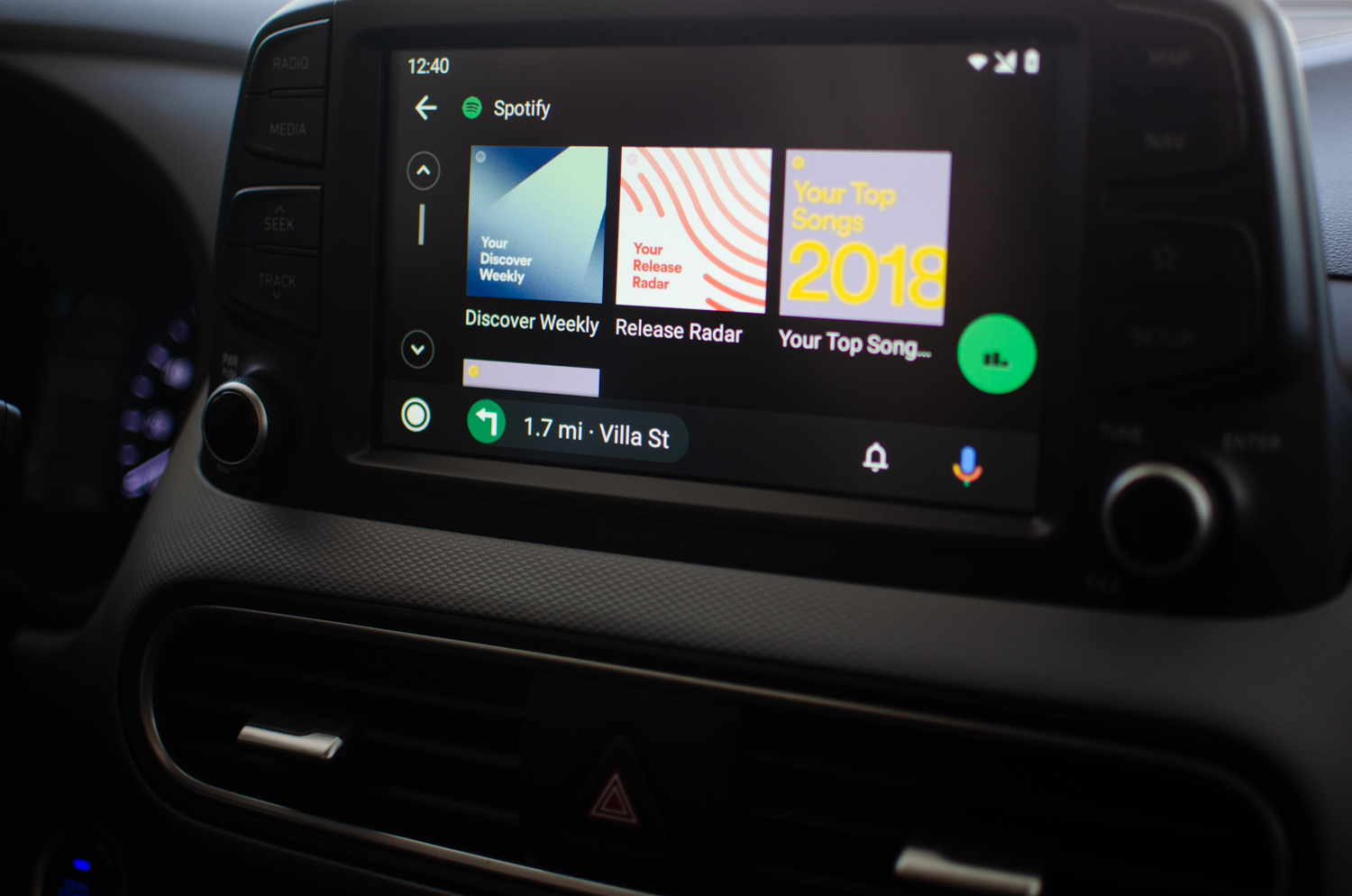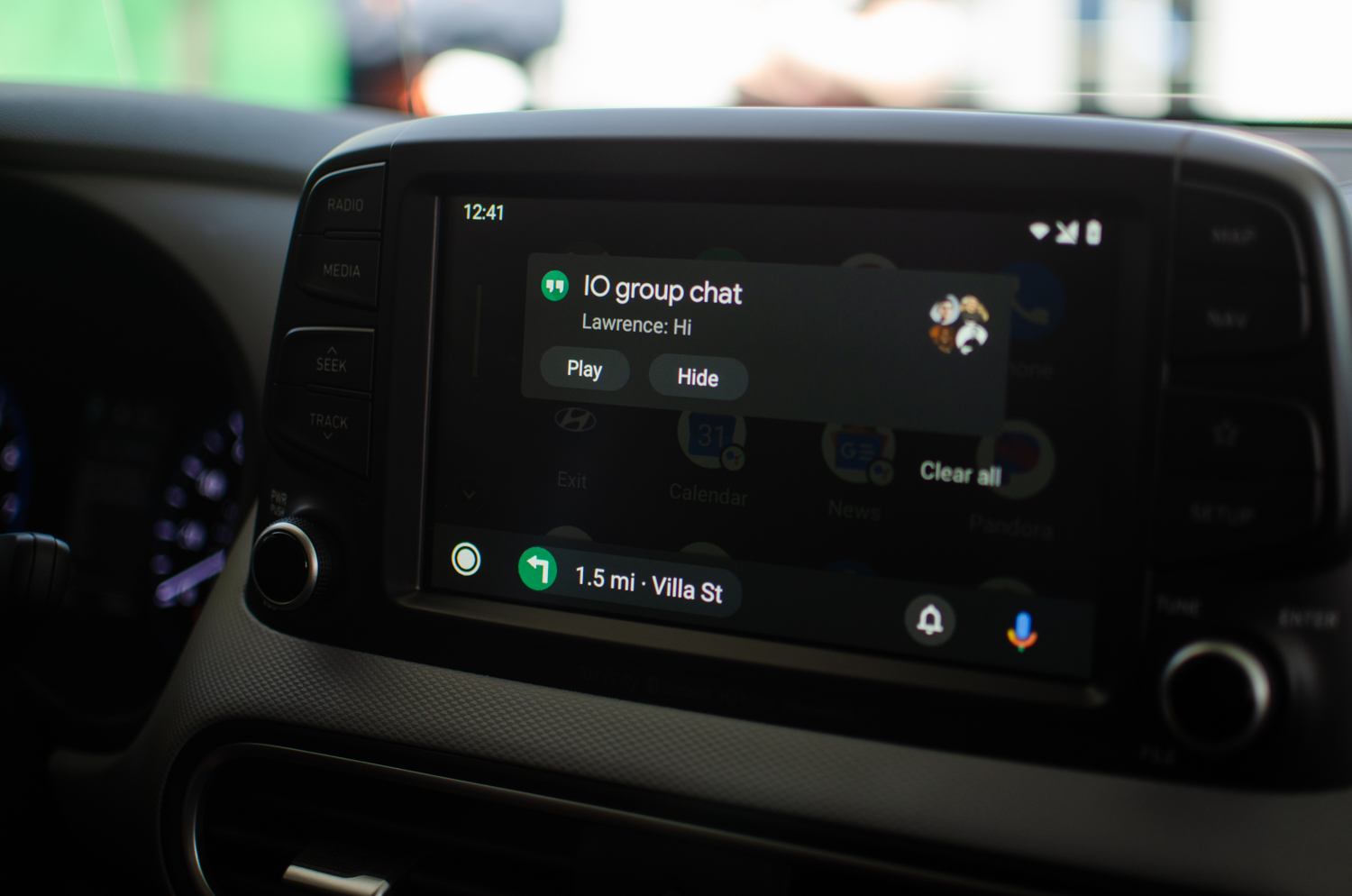Android Auto just got its largest redesign since the system’s launch in 2014. Google announced at its I/O developer conference earlier this year (we were there and you can watch our walkthrough in the video above) and the changes are all about tapping the screen in your car less. We sat in a car running the new redesign and also got a glimpse at other new Google features to improve the driving experience, such as remote vehicle controls and Google Assistant’s very own Driving Mode. Here’s what they’re all like.
The Android Auto redesign
After driving around the past few days with a car that used Apple’s CarPlay, the new
The new interface also now starts in your favorite navigation app as you start the car, be it Maps or Waze, and it even will resume playing the last music track you were listening to — almost like having the radio go on when you start a car. Maps will suggest locations to navigate to, which means there’s a good chance you may not need to type in directions or use voice at all. There’s also now a widget at the bottom to control media, so you never have to really leave the Maps app when navigating.
The redesign is a good step forward in making important functions of the screen easier to access with fewer taps.
Even better, if you do need to switch to your music app, it’s very easy to do via the icon on the bottom left, and the buttons are large enough to comfortably press without accidentally tapping something else. There’s also now an app launcher as well that resembles the app drawer on
In the app launcher, there are a handful of apps you’ll see with the Assistant icon next to them, like the calendar, weather, and reminders icons. These are services you can tap on to have Assistant quickly read out things like the weather, or have the Assistant swiftly create a reminder or calendar event. Google said it’s hoping to make these more customizable and add more in the future.
A new notification center is present, also akin to
The redesign is a good step forward in making important functions of the screen easier to access with fewer taps. It will roll via update starting now across all cars that support
The list of automakers that offer
Assistant’s Driving Mode
- 1. The dashboard
- 2. Message previews while navigating
- 3. Recommendations in the dashboard
- 4. Stickied navigation at the top
If your car doesn’t support
It’s largely a personalized dashboard with all sorts of recommendations as you drive, such as calendar events, quick actions to navigate to work and return a call. There are also media recommendations based on what you were last playing, whether it was on your phone or through a Google Home at home.
Assistant will read out notifications, and as usual, it’s controllable by voice. While navigating, you can just swipe up from the bottom to pull up media controls. And if you go back to the dashboard, the directions will get stickied at the top of the screen so you never miss a turn.
The new Assistant Driving Mode is the future of
Remote vehicle controls
Remote vehicle controls are a new feature limited to cars that work with Hyundai’s Blue Link and Mercedes-Benz’s Mercedes me connect. If you have one of these supported vehicles, you’ll be able to hook Assistant up to the car, and begin controlling certain functions before you even leave the house — through Assistant on the phone or a
You can unlock the doors, have the temperature start running, and even check how many more miles the car can take you before you need to refuel.
At Google I/O, we also saw Android Automotive powering a car, though this technology seemed a little further away.
Editors' Recommendations
- This is what Google Maps’ big redesign looks like
- Wear OS 5 is the future of Android smartwatches. Here’s what’s new
- You’ll soon be able to watch YouTube videos in your Android Automotive car
- Android Auto will now tell you if your USB cable is faulty
- Motorola MA1 gives your car wireless Android Auto

